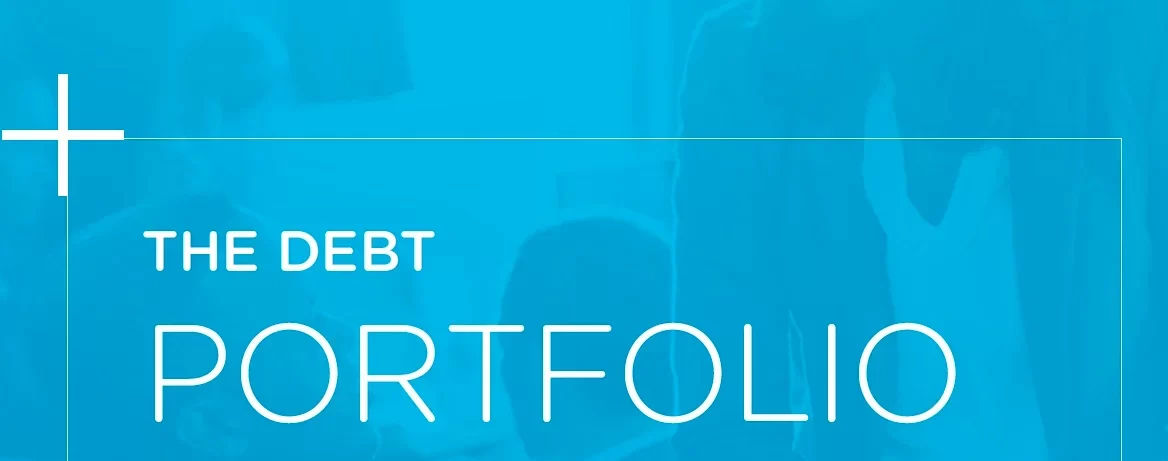Navigating The Debt Market – How To Find The Best Debt Portfolios
- 1 Understanding Debt Portfolios
- 2 Factors To Consider When Looking For Debt Portfolios
- 2.1 Type of Debt Portfolio
- 2.1.1 Consumer
- 2.1.2 Commercial
- 2.1.3 Distressed debt
- 2.2 Industry of The Debt Portfolio
- 2.3 Credit Rating of The Debtor
- 2.4 Collection History of The Debt Portfolio
- 3 How To Find The Best Debt Portfolios
- 4 Analyzing The Potential of The Debt Portfolio
- 4.1 Estimating The Potential Returns
- 4.2 Assessing The Risks Involved
- 4.3 Evaluating The Collection Strategy
- 5 Making an Informed Decision on Purchasing Debt Portfolios
Understanding Debt Portfolios
When considering a debt portfolio purchase, investors must comprehensively study their options. They should examine several factors: The current market conditions, loan performance metrics, and historical trends to determine whether there is any potential for future liquidity risks. Moreover, performing due diligence on third-party loan servicing providers is also an essential part of conducting comprehensive research.
Investors should consider established firms with good track records when selecting service providers. As with any investment decision, it’s crucial to know that you’re making informed choices based on comprehensive analysis.
Purchasing quality debt portfolios can yield significant returns for investors. Opportunities are vast within a niche market where multiple asset classes are traded every day. Consequently, you don’t want to miss out on potentially lucrative investments in today’s market where opportunities exist if you know where to look!
Finding the perfect debt portfolio is a bit like playing poker – you’ve got to know when to hold ’em, know when to fold ’em, and know when to walk away (from a bad deal).
Factors To Consider When Looking For Debt Portfolios
To navigate the market and find the best debt portfolios for sale, consider the type of debt portfolio, industry of the debt portfolio, credit rating of the debtor, and collection history of the debt portfolio. Understanding these sub-sections will help you make an informed decision when investing in debt portfolios.
Type of Debt Portfolio
Each type has its unique characteristics to consider when looking for a suitable portfolio. Debt portfolios come in various types, including
Consumer
Consumer debt portfolios consist of unpaid credit card bills or personal loans owed by individuals.
Commercial
Commercial debt portfolios typically involve unpaid business loans or lines of credit owed by companies.
Distressed debt
Distressed debt portfolios include defaulted loans that have already gone through some form of collection effort.
When searching for the right portfolio to purchase, it is crucial to consider the type of debt and its quality. High-quality debts have a lower risk of default and are generally more valuable than lower-quality debts. Additionally, the size and geographic location of the debts may also affect their value.
Industry of The Debt Portfolio
When looking to buy debt portfolios, it is crucial to consider the industry in which the debts originated. Certain sectors like healthcare or financial services have distinct regulatory frameworks and timelines for repayment.
This may impact the portfolio’s worth and purchase price. It’s also advisable to evaluate the predictability of debt resolution based on historic trends within an industry.
Furthermore, legal compliance needs careful attention because national and state laws vary according to sector, and there are stricter regulations on matters such as data protection, credit recovery practices, statute of limitations, among others, in some industries. It’s important to understand where these margins fall before taking action.
In addition to industry nuances, there might be variations in how the debts are sold throughout the life cycle of collection. In my experience with a private equity firm focused on healthcare debt management, we found that certain accounts were more efficiently collected through legal proceedings early than late into arbitration procedures.
Credit Rating of The Debtor
Understanding the debtor’s trustworthiness is vital when looking for debt portfolios. The debtor’s creditworthiness heavily influences the price at which debt portfolios are sold. Credit scores, payment history, and debt-to-income ratio are factors in assessing credit rating.
Debt buyers must prioritize analyzing each debtor’s creditworthiness. This factor is essential as it determines the portfolio’s risk level alongside its return potential. Debtors with a high credit score pose less risk and often come with a higher rate of return.
It’s important to note that other factors, such as employment status, income, and borrowing habits, should be considered when analyzing a debtor’s creditworthiness. Assessing this will enable you to buy and manage your debts while maximizing returns effectively.
Collection History of The Debt Portfolio
When searching for debt portfolios to purchase, it is essential to consider the past performance of collections. Specifically, exploring the collection history of the portfolio can provide valuable insights into its likelihood of success. This information lets individuals make informed decisions when investing in a particular portfolio.
Understanding how a debt portfolio has performed in the past is crucial as it provides an indication of potential future gains or losses. If the collection history shows consistently high rates of successful debt recoveries, this is a positive sign. Conversely, if previous recovery rates are low, individuals may want to investigate further before purchasing.
In addition to collection history, it is also important to consider other factors when evaluating debt portfolios for sale. The type and age of debts included must be carefully examined, along with recent changes in legislation and economic conditions that may impact the likelihood of recoveries.
It is worth noting that while collecting on debts can be a lucrative business, there are risks involved. In some cases, even experienced investors may be unable to collect on every delinquent account. As such, conducting extensive due diligence and risk analysis before investing in any debt portfolio is critical.
Finding the best debt portfolios for sale is like searching for a needle in a haystack but with more financial stress and fewer farm animals.
How To Find The Best Debt Portfolios
To find the best debt portfolios for sale, you need effective ways. Checking online auction sites, attending debt portfolio auctions, hiring a debt portfolio broker, and networking with investors in the industry can all be potential solutions. Explore these sub-sections to learn more about each approach and determine which option works best for you.
Checking Online Auction Sites
Online shopping for debt portfolios is an effective way of acquiring considerable debts at a lower price.
Here are six points to consider when checking online marketplaces:
- Check the seller’s credibility and history.
- Analyze the quality and type of debts in the portfolio that suits your needs.
- Determine the level of due diligence before finalizing the purchase.
- Get knowledge on bid types, such as open bids or sealed bids.
- Understand the legal aspects surrounding debt purchasing, such as licensing laws and regulations dutifully followed by sellers.
- Beware of fraudsters who host illegitimate auctions online.
Ensure to acquire specific information about each listing before making a purchase.
To ensure transparency in purchasing, understand language structures such as opening and closing prices, payment methods, deadlines, and other similar phrases.
Your chosen target should be based on specific criteria like age, outstanding balances and debtor’s credit history. Don’t miss out on this opportunity to increase your investments by investing wisely in manageable debts.
Get your bidding hand ready and prepare to add some debt to your portfolio at these lively and slightly depressing auctions.
Analyzing The Potential of The Debt Portfolio
To analyze the potential of a debt portfolio, you can take the following steps.
Estimating The Potential Returns
Debt portfolios can offer a solid investment opportunity, but it’s crucial to estimate the potential returns accurately. To do so, investors need to take into account factors such as the interest rates and credit quality of the underlying debt.
Investors should also evaluate the diversification of their portfolio, considering their investment objectives. For example, investing heavily in low-rated bonds may yield higher returns but can also lead to higher risk.
While interest rates fluctuate over time, investors can utilize analytical models to simulate how their portfolio would perform under different market conditions. It’s essential to monitor and rebalance your portfolio regularly to ensure you’re maximizing your return while managing risk.
Overall, estimating potential returns for a debt portfolio requires careful consideration and analysis. By understanding key factors that affect returns and taking proactive steps such as portfolio diversification and monitoring performance regularly, investors can maximize their investment returns while minimizing risk.
Don’t miss out on maximizing your investments through strategic debt portfolio management. Explore all options and consult with experts to make informed decisions that will positively impact your financial future.
Assessing The Risks Involved
To evaluate the potential of a debt portfolio, it is important to assess the possible risks associated with it. Understanding the risk profile of the portfolio can help investors make informed decisions about their investment strategy and minimize losses.
One way to analyze the risk involved in a debt portfolio is to evaluate its default risk. Factors such as credit ratings, macroeconomic conditions, and industry trends can affect the likelihood of default. Investors should also consider interest rate risk, which measures how sensitive a bond’s price is to changes in interest rates.
Additionally, liquidity risk must be analyzed as it can affect how easily an investor can sell their bonds and retrieve their investment.
It is imperative for investors to regularly monitor and reassess their debt portfolio’s risk exposure to ensure that they remain in line with their goals. An effective way to manage these risks is by diversifying investments across different asset classes, industries, and companies.
Evaluating The Collection Strategy
Evaluating the effectiveness of debt collection strategies is pivotal to improving the overall performance of a debt portfolio. By using data analysis and predictive modeling, debt collectors can determine the most effective ways to recover delinquent debts.
Effective debt collection begins with understanding current market trends and debtor behavior patterns. By analyzing a wide range of metrics, such as total outstanding balances, payment history, and charge-off rates, lenders can create strategies that are tailored specifically for individual borrowers.
One approach to improving collection strategies is through implementing segmentation techniques that help identify delinquent accounts based on risk factors. This approach helps lenders focus on high-yield accounts with the greatest potential for recovery.
Moreover, debt collectors must also pay attention to customer engagement methods, including using predictive dialers to reach customers at optimal times or employing targeted communication channels like email or text messages.
Making an Informed Decision on Purchasing Debt Portfolios
To make an informed decision on purchasing debt portfolios, you need to navigate the market with expert skills.
Negotiating The Price
When it comes to procuring debt portfolios, it is essential to negotiate the deal effectively to ensure a profitable outcome. As a buyer, it is crucial to establish a plan and decide on a pricing model that aligns with your business objectives.
One of the best ways you can negotiate the price of debt portfolios is by conducting extensive research on the current market trends and understanding various factors that might affect the price.
You must comprehend the nature of debts, the degree of risk entailed in acquiring them, and their prospects for recuperating what you paid for them. This will help you evaluate opportunities better, identify areas where you can compromise or stand firm, and conduct effective negotiations.
Moreover, establishing rapport with the seller will enable both parties to arrive at a fair price. Following ethical practices when dealing with organizations or individual sellers can also help build trust and maximize profits. Buying low-risk portfolios may fetch higher returns than buying high-risk portfolios at lower prices.
Pro Tip: Make sure not to compromise your investment’s quality while negotiating as this may lead to significant losses in the long term.
Reading through legal documents is like trying to find a needle in a haystack, but instead of a needle, you’re looking for a clause that won’t stick it to you later.
Reviewing The Legal Documents
When evaluating the purchase of a debt portfolio, it is critical to conduct a thorough analysis of all legal documents associated with the debt. This step should involve meticulous attention to detail by examining every element of the documents in depth. It’s imperative to ensure that all documents adhere to legal regulations and are complete.
One must examine details like whether there is any authorization for power of attorney; rights granted under loan origination agreements; bankruptcy filings and their impact on the debt; whether there are any disputes; the statute of limitations; and more. Review all such relevant information before making any decisions on purchasing a debt portfolio.
It would be crucial to obtain professional advice and support during the review process. Legal counsel can offer insight into irregularities or potential issues within contracts associated with the debts. During this stage, it is vital to ask questions, request additional information, and engage with experienced professionals.
Needless to say, failure to evaluate legal documents thoroughly could result in significant financial losses in the future, as well as legal repercussions while dealing with the portfolios. Thus preparing a checklist or guideline will prove effective for reviewing legal documents when analyzing debts for purchase.
Funding options: because sometimes you just can’t pay your debts with monopoly money.
Considering The Funding Options
Considering the Means of Obtaining Financing
Acquiring debt portfolios is a business strategy to purchase defaulted debts. Debt buyers turn to investors for financing when purchasing these portfolios. Any potential buyer must evaluate the available funding options before entering into such an agreement.
Borrowing money from a bank or other financial institutions is the most common way that buyers acquire financing. The key advantage is that these institutions can provide capital at low-interest rates and offer flexible repayment plans.
Another method involves partnering with investors who may either buy the portfolio outright or lend the funds necessary to purchase them. This type of partnership represents an equal share in future profits, and both parties have control over decision-making in regard to the management of debts.
A third option for obtaining financing is via loans against specific assets that would serve as collateral. For example, property, equipment, and inventory can all be used as a guarantee for securing a loan.
- Obtain Capital through Banks or Financial Institutions.
- Partnership with Investors.
- Secured Loans.
When considering debt portfolio financing, it’s essential to assess each option’s cost, terms, and impact on your business uniquely. The ideal choice will provide you with suitably priced capital while offering long-term incentives that justify the up-front expenses.
There are many opportunities available by investing in non-performing debt, but there are also risks involved in making an uninformed decision.
It’s critical to evaluate your goals thoroughly and choose reliable funding sources when seeking investments in this space. Failing to do so may lead to missed financial gains or losses to your organization.
Closing a deal with a debt portfolio seller is like negotiating with a ghost – you can’t see their debt, but you know it’s there.
Closing The Deal With The Seller.
When finalizing the purchase of debt portfolios, a professional approach to finishing negotiations with the seller is crucial.
Work with legal experts to ensure all necessary documents are in order and address any concerns or questions that may arise.
Clear communication and transparency on both sides can lead to a successful deal.
It is essential to pay close attention to any terms or conditions outlined in the portfolio purchase agreement.
Ensure that your objectives align with those of the seller, and any critical information, such as outstanding balances or legal disputes, is disclosed.
Seek clarification on any ambiguous language to avoid any future disagreements.
As part of closing the deal, perform due diligence by conducting thorough research into each account within the portfolio.
Create an action plan for resolving any issues, such as delinquent balances or disputed debts.
Communicate your plans clearly to the seller and create a timeline for resolving issues.



















